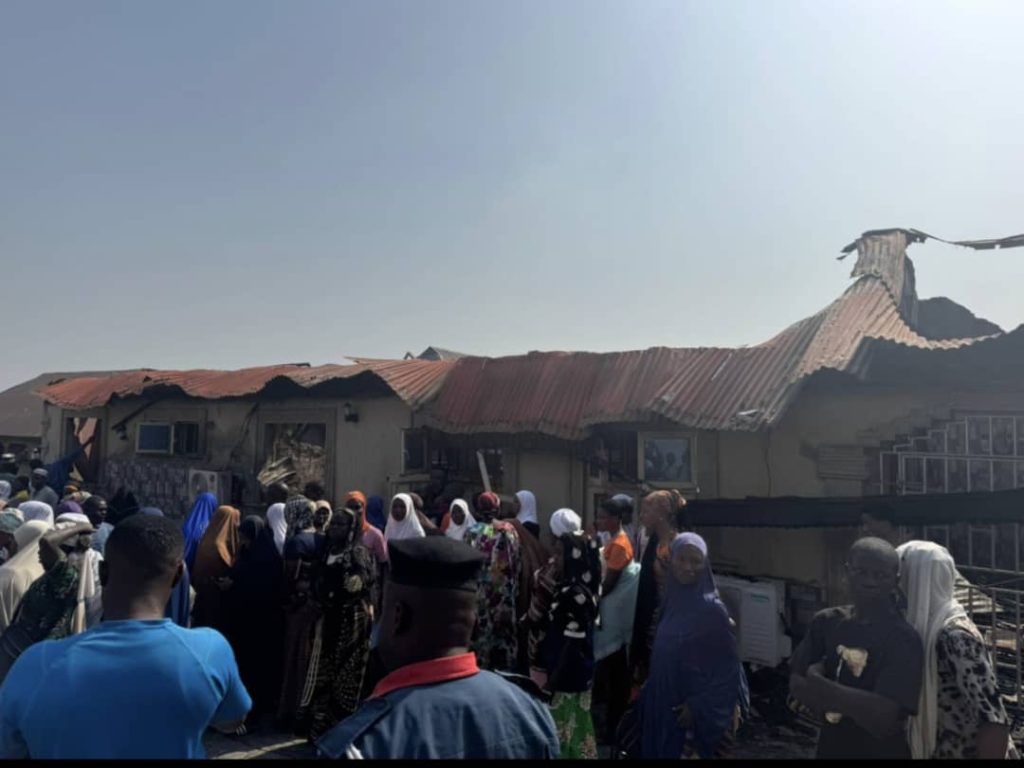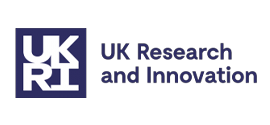
Photo: Mararaba, Nasarawa state, during one of the researcher’s community visits in 2023 (the photo depicts no research participants and is a casual public setting). Copyright: Fisayo Onaseso
Community unrest due to the threat of kidnapping is highly detrimental to a community’s peace. This is the case in many communities in northern Nigeria. Primary victims of kidnapping who survive their ordeal suffer several forms of abuse in the hands of their captors, including sexual violence and sexual slavery, physical violence and torture, psychological violence and other abuses, which creates the need to develop coping mechanisms and healing strategies after their release. IDVRM Research Associate, Fisayo Onaseso, presents findings from research she previously conducted independently with primary and secondary survivors of kidnapping and religious and community leaders in Nigeria. She argues that the role of religious leaders and institutions in supporting survivors of kidnapping is crucial not only to the individuals but the community at large.
Several communities in northern Nigeria have suffered insecurity and unrest due to systematic kidnappings. In general, women and girls have been kidnapped more extensively than men and boys (e.g. see here). The Armed Conflict Location and Event Data Project (ACLED) reported that in 2024 between February and March, over 500 people were kidnapped in the North East and North West regions of Nigeria (see here). ACLED also reported a significant increase in bandit activities between 2018 and 2022 (see here). Secondary schools are a primary target for kidnappers (see here). A report by the Nigerian firm SBM Intelligence summarised by OCCRP found that of 7,500 abductees in a year 1,056 had been killed (see here). The primary victims of kidnapping are the abducted individuals. Secondary victims are the loved ones of the kidnapped who may have witnessed or not the abduction and may be traumatised or suffer due to the uncertain conditions of their loved ones. These unrests and experiences of loss have left several communities in northern Nigeria in a state of trauma that requires urgent and thoughtful interventions.
In 2021, 2023 and 2024, I conducted independent research with primary and secondary survivors of kidnapping in selected communities in northern Nigeria, specifically in Kano, Kogi, Nasarawa, Niger and Kaduna Plateau. I interviewed 100 primary survivors, 80 secondary victims, 48 religious leaders and 22 community leaders (see table below). Purposive and snowball sampling methods were used in sampling participants for the interview who fit the criteria for participation, which included: being a survivor of kidnapping, having a loved one who is a survivor or being a religious or community leader supporting survivors of kidnapping. The age requirement for participation was 18 years of age. Four girls aged 16, 16, 17 and 17, who were primary survivors of kidnapping, also reported their experiences with the consent and assistance of their parents, who spoke to them and not the researcher. The parents responded to the questions prepared by the researcher after they had spoken to their children.
Table: Participants’ profiles
| Selected communities | No of primary victims | No of secondary victims | No of religious leaders | No of community leaders | Response to survivors | Knowledge gap on response to survivors |
| Okene Kogi state | 12 (9 females, 3 males) | 9 | 6 | 2 | Ineffective | Unaware |
| Birom, Plateau state | 8 (6 females, 2 males) | 7 | 4 | 2 | Ineffective | Aware but lacks implementation strategies |
| Zaria, Kaduna | 7 (6 females, 1 male) | 9 | 5 | 2 | Ineffective | Aware but lacks implementation strategies |
| Kano, Kano state | 9 (All females) | 6 | 4 | 2 | Ineffective | Unaware |
| Suleja, Niger state | 12 (10 females, 2 males) | 8 | 5 | 4 | Effective | No gap |
| Kaduna, Kaduna state | 9 (6 females 3 males) | 8 | 4 | 2 | Ineffective | Aware but lacks implementation strategies |
| Mararaba, Nasarawa state | 10 (8 females, 2 males) | 9 | 6 | 2 | Partially effective | Aware but lack sufficient human resources |
| Nyanya Nasarawa state | 15 (13 females, 2 males) | 12 | 5 | 2 | Ineffective | Unaware |
| Ajaokuta, Kogi state | 18 (12 females, 6 males) | 12 | 9 | 4 | Effective | No gap |
| Total | 100 | 80 | 48 | 22 |
The research was conducted following standard ethical considerations. The study participants were fully briefed on what the interview would entail and what they could expect from the questions. All participants voluntarily agreed to participate in the research. To minimise re-traumatisation, the emotional condition of participants was taken into consideration and interviews were stopped at any point if participants felt unable to continue. Interviews were held in places where the participants were most comfortable with. Some participants were interviewed in their homes and others were interviewed at their places of religious worship. In the case where participants requested to have a family member or a close friend by their side during the interview for emotional support, such requests were immediately granted. Before conducting research, I ensured that every authority figure in the community had full understanding of what I wanted to do and that approvals were granted. Where community leaders were not fluent in English, I communicated using local dialect.
Experiences of abuse and trauma
Primary victims and survivors reported that they still experienced traumatic effects because of the physical, emotional and sexual abuse they had lived through during their captivity. All young girls and women painfully narrated how they had been brutally raped, beaten and denied food. All girls and women who were interviewed mentioned that they had been raped at different times. Most of them mentioned that when they complained that they needed to use the bathroom one of the male captors would follow them and sexually assault them, including girls and women who were on their monthly period. Some of the girls and women mentioned that they had been raped more than once while in captivity. Most of the young girls who were abducted from school said that they would never go back to school because of fear of being abducted again, and their parents expressed full support for their decisions.
Secondary victims and survivors, including parents, husbands, wives, neighbours and community members also experienced traumatic effects and fear. Many reported withdrawing their children from school or leaving the community altogether if they had the option. All married women (n=50) who were abducted mentioned that they had been raped, and about 70% (n=35) mentioned that their abduction had affected their relationship with their husbands because the women experienced post-traumatic stress disorders (PTSD), which became stronger whenever their husbands approached them to have sexual intercourse. The women confided that they often reacted by screaming and crying, which discouraged their husbands from approaching them altogether. Seventeen of the women whose relationships with their husbands were affected as a result of their experiences reported being abandoned by their husbands as a result. Many interviewees shared that they continued to live in fear and uncertainty.
Still, most of the research participants, both primary and secondary victims and survivors, confided that they were learning to live with their pain. When speaking about their coping mechanisms, 90% (n=162) of the research participants did not refer to government interventions as benefiting them. Instead, 75% (n=135) of survivors who experienced effective responses mentioned that their religious group had been their most helpful support system, and 45% (n=81) noted that the community leaders had helped them heal from the trauma and to restore confidence in the community. Only 10% (n=18) mentioned that the government had played a part by sometimes providing the financial ransom for the release of the abductees, police and military staff to search for the kidnapped, or by sending state representatives to visit the community, reassure them about the security situation and setting up safety committees. These were generally reported to have been ineffective and without much benefit to the research participants.
Role of religious leaders
Based on the participants’ accounts, religious and community leaders played a significant role in providing mental, emotional, material and spiritual support. In addition to praying for the kidnapped to be released and for strength for the loved ones, religious leaders at times established trauma response units that provided holistic support to kidnapping victims and survivors. For example, a Pentecostal Church in a rural community in Kogi state, north-central Nigeria, set up a kidnap response team to provide moral, material, emotional and spiritual support to the relatives of kidnapped individuals while they waited for their release. Most of the secondary victims recounted how much this had helped them and had strengthened them during extreme uncertainty. According to a clergyman in Ajaokuta, Kogi state, this idea was conceived after a mother had passed away following her daughter’s kidnapping. In this case, 10 out of 12 of the secondary victims who benefited from the system in the community reported how helpful the support team had been for them.
The same team also provided medical and mental health support to primary victims of kidnapping after their release. One of the participants who had been previously kidnapped confided that she planned to commit suicide after her release because she doubted her ability to live with the pain she had endured. However, the immediate response of the kidnap trauma team led her to change her mind.
While partnering with non-governmental institutions to provide medical and trauma-sensitive support, religious and community leaders focused on giving the community hope and restoring some level of normalcy. Religious leaders who were interviewed referred to verses in their religious books to justify the medical, emotional, mental and material help that they provided to primary and secondary kidnapping victims and survivors.
Effectiveness of responses
The findings of the research suggests that there are no ‘one size fits all’ responses because the trauma experienced by victims and survivors can be variable. Some survivors are deeply traumatised because of repeated rape by their abductors; others suffer as a result of intense mental and emotional stress experienced in captivity, and others due to physical violence and torture, such as food deprivation or other injuries inflicted upon them. Numerous participants narrated that they had been beaten and had been deprived of food and drink while their captors waited on the ransom negotiation outcomes. In communities where the response to victims and survivors of kidnapping was considered effective, 19 of 22 of the religious and community leaders who were interviewed believed this to be the case because of a survivor-centred approach. In communities where the intervention response was considered ineffective, over a third of religious and community leaders admitted that they had little idea about how to help affected people and community members. Only about a quarter of affected communities included in the study were reported to have been able to provide an effective response, including two communities with effective responses and one community with a partially effective response due to insufficient human resources.
Most of the communities with what were perceived to have been ineffective responses lacked information on how to help, or those who had some information on how to help were unable to put in place an effective response system. These communities reported deaths among secondary victims of kidnapping trauma, referring to family and relatives of primary victims. High depression rates, slow healing and high suicide tendencies were also reported among primary and secondary survivors of kidnapping.
Policy and practice implications
Responses to victims and survivors of kidnapping must be prompt and relevant and must respond effectively to their needs. In the absence of professionalised, structured or centralised responses, influential and resourceful community stakeholders, such as religious and community leaders, can identify what these needs or might be among survivors in their respective contexts and assist in setting up effective support systems.
Healing from the abuses and trauma that result from kidnapping requires a well-informed, survivor-centred approach aimed at helping survivors of kidnapping to recover and cope and to live a free and dignified life. Adopting a trauma-healing response based on assumptions, experiences or suggestions from other contexts might not be an effective approach as it risks missing contextual realities.
About the author

Fisayo Onaseso is Research Associate (honorary) at the Institute of Domestic Violence, Religion & Migration. She is a Nigerian researcher based in Lagos who has conducted extensive independent research employing qualitative methods centred on lived experiences. She has focused on communities where women and girls have been physically, sexually and emotionally abused due to insecurity, stigma resulting from incorrect or harmful religious interpretations or cultural practices. Fisayo can be reached at Fisayoa9@gmail.com.
Disclaimer: IDVRM aims to serve as a platform that researchers internationally, especially in the non-western world, can use to disseminate their research. We do our best to ensure that authors who publish with us have conducted their research following the highest ethical standards, with decolonial reflexivity and principles of least harm to participants in mind. We do not require authors to submit ethical documentation, but we ask our authors to provide sufficient information about ethical procedures in their submissions. It is beyond the capacity of IDVRM to verify this information. Authors should be reached directly to respond to questions regarding their research.
Opinions expressed by authors contributing to our blog are those solely of the authors and do not necessarily represent the position of IDVRM, its Director or other team members. IDVRM is comprised of diverse individuals who are encouraged to share their experiences and opinions openly with recognition that other team members may have different experiences and positions. IDVRM does not claim to represent any one community and we understand that belonging to a specific group does not entitle any one of us to speak for all.
